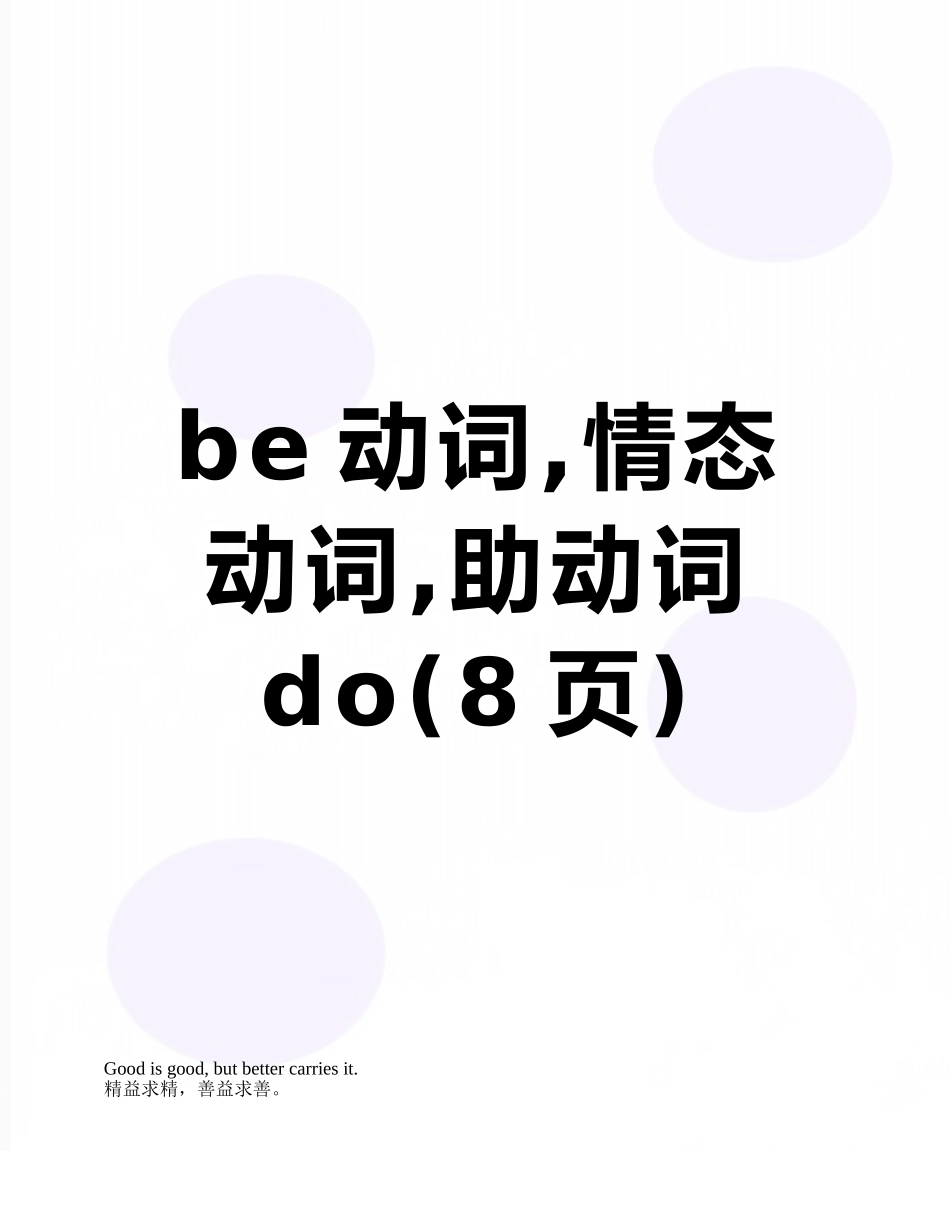be 动词,情态动词,助动词do(8 页)Good is good, but better carries it.精益求精,善益求善。be 动词,情态动词,助动词 do/does的用法区别及练习1. 由连系 am,is,are 构成的句子:变一般疑问句时把 am,is,are 提到句子的前面,句尾用问号即可。变否定句时直接在am,is,are 后面加 not 即可。例如: 肯定句:He is a student.一般疑问句: Is he a student?否定句: He is not a student.画线提问: 对 he 提问: Who is a student?对 a student 提问: What is he? or What does he do?2. 由情态动词 can, may, should 等构成的句子: 变一般疑问句时把 can,may,提到句子的前面,句尾用问号即可.变否定句时直接在 can,may,后面加 not 即可. 例如:肯定句: She can swim.一般疑问句: Can she swim?否定句: She can not swim.画线提问: 对 she 提问: Who can swim?对 swim 提问: What can she do?3. 由行为动词构成的句子: 需要加助词 do 或does. 变一般疑问句时把 do/does 放在句子前面. 变否定句时把 don’t/doesn’t 放在动词的前面。要注意观察动词的形式并对号入座。一般疑问句和否定句的动词三单式都要变回原型。play-----do plays-----does 例如:肯定句: They play football after school. He plays football after school.一般疑问句: Do they play football after school? Does he play football after school?否定句: They don't (do not) play football after school. He doesn’t’ play football after school.画线提问: 对 they/he 提问: Who plays football after school? 对 play football 提问: What do they do after school? What does he do after school?对 after school 提问: When do they play football? When does he play football? 针对性练习按要求改写句子:1.I know the answer.(一般疑问句) ______ ______ __________the answer?2.We can see some birds.(一般疑问句) ______ ______ see ______ birds?3.He designs clothes.(一般疑问句) ______ he ________ clothes?4.There are some flowers on the teachers’ desk.(一般疑问句)______ ______ ______ flowers on the teachers’ desk?5.There are...


